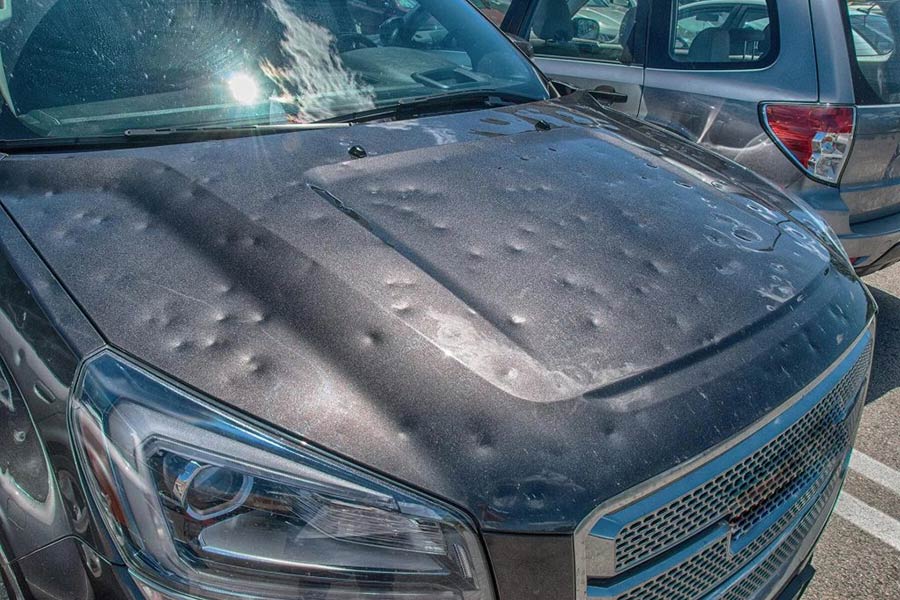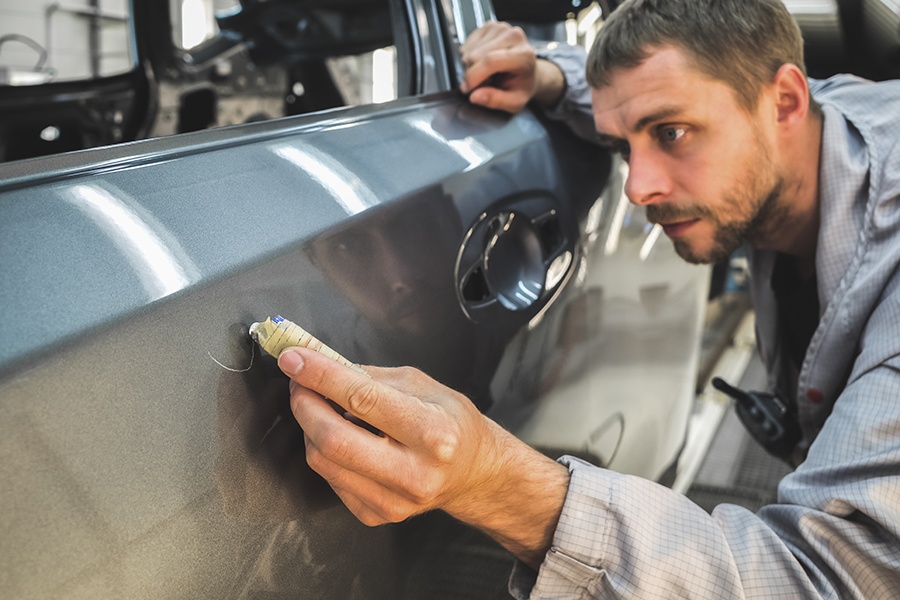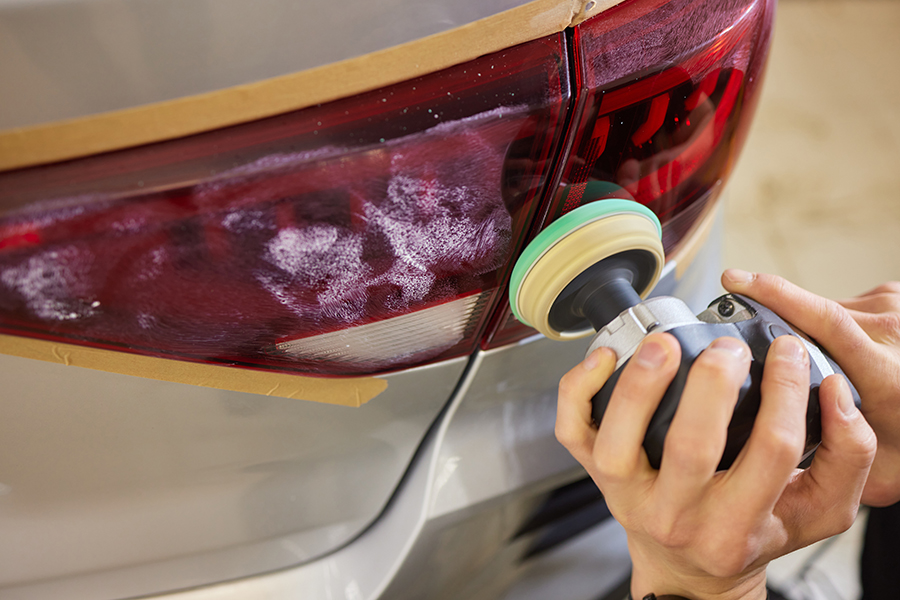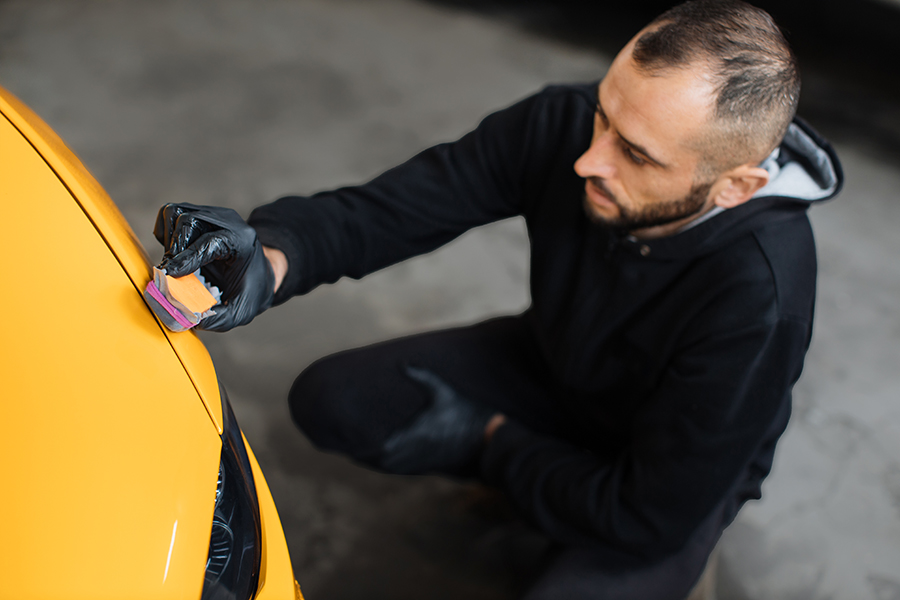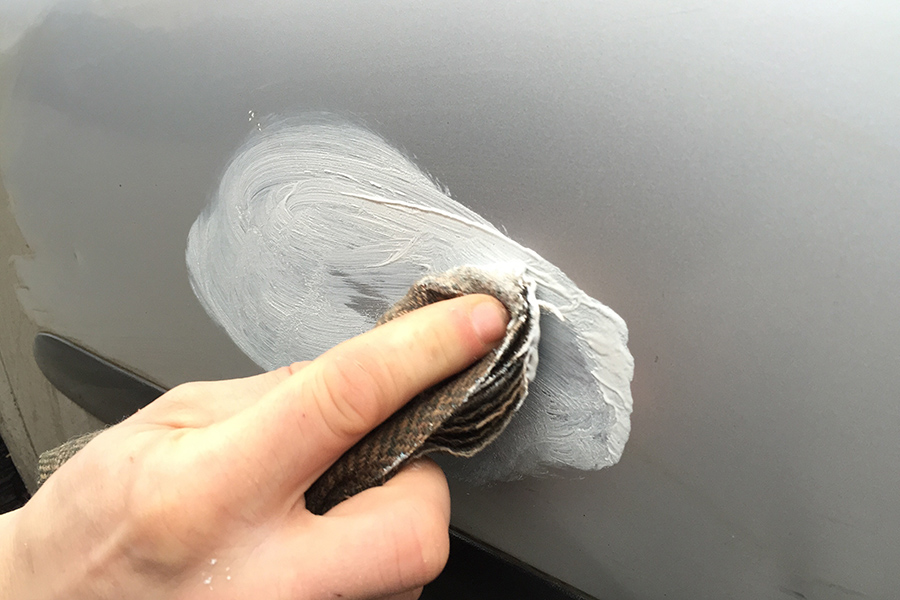Car hail damage can be a real headache, leaving dents and dings that detract from your vehicle's appearance and value. Historically, hail storms have caused significant damage to cars, leading owners to seek effective repair solutions. Today, understanding the ins and outs of car hail damage is crucial for maintaining your vehicle's condition and ensuring it remains visually appealing and functional. This post will dive into what you need to know about car hail damage, covering its impact and the best ways to address it.
Key Takeaways
- Knowing what hail damage looks like on your car can help you quickly decide the next steps for repair.
- Before taking your car in for repairs, it's smart to document the damage and contact your insurance company to understand your coverage.
- Your insurance policy plays a crucial role in covering the costs of hail damage, so be sure to know the details of your coverage.
- There are several repair techniques for hail damage, including paintless dent repair, which can be effective and cost-efficient.
- After repairing hail damage, maintaining the car's exterior through regular washes and wax can protect it from future damage.
- Acting promptly when your car sustains hail damage can save you time and money in the long run.
Understanding Hail Damage
Effects on Vehicles
Hail can leave dents on cars and even break windows. This damage lowers a car's value and hurts its look. Sometimes, hail also causes problems you can't see right away.
Common Questions Answered
Yes, small dents from hail should get fixed to avoid more issues later. You usually have about one year to tell your insurance about the hail damage. The cost to fix hail damage varies, but insurance might cover it.
Glossary of Terms
"Comprehensive coverage" is insurance that pays for hail damage repair. "Paintless dent repair" (PDR) is a way to fix dents without needing to repaint your car. "Pre-loss condition" means how your car was before it got damaged by hail.
Preparing for Repair
Documenting the Damage
Before starting repairs, it is crucial to document every detail of the damage. Take clear photos from various angles to capture all hail impacts. This visual evidence is vital for insurance claims and repair assessments.
Make a thorough list of all damaged areas and any items inside the vehicle affected by the hail. This step ensures nothing gets overlooked during the repair process.
Keep all repair documents, including estimates and invoices, as well as any correspondence with your insurance company. These records are essential for tracking the repair progress and handling insurance claims efficiently.
Importance of a Clean Car
A clean car is key to accurately assessing hail damage. Dirt and debris can hide or disguise the extent of the damage, leading to inaccurate repair quotes.
Cleaning your car before the assessment helps in identifying even minor dents that could be missed otherwise. It also facilitates effective repair work, ensuring no hidden damages are left unaddressed.
Choosing Repair Services
Selecting a reputable and experienced hail damage repair service is critical. Look for services with positive reviews and a track record of quality workmanship.
Avoid making your choice based solely on price. Cheaper options might not provide the quality or durability you need.
Ask potential repair services for before-and-after photos of their previous work. This evidence can help gauge their expertise in handling similar cases effectively.
Insurance and Coverage
Filing a Claim
If you find hail damage on your car, contact your insurance provider right away. They will guide you through the process. You'll need to provide specific details about the damage, your policy number, and possibly photos of the damage. Understanding your policy's deductible is crucial because it affects how much you'll pay out-of-pocket.
Understanding Pre-Loss Condition
Returning your vehicle to its state before the hail damage, known as pre-loss condition, is essential. This not only ensures your car looks good but also maintains its resale value. Your insurer plays a key role in this process by covering repairs that restore the vehicle's original condition.
Insurance Coverage Explained
Hail damage is usually covered under comprehensive insurance coverage. This differs from collision coverage, which applies when your car hits or is hit by another vehicle. Comprehensive coverage protects against non-collision incidents like hail storms. The cost of premiums and your deductible directly impact how much you pay for repairs after filing a hail damage claim.
Repair Techniques
Paintless Dent Repair
Paintless Dent Repair (PDR) is a cost-effective method for fixing hail damage. It involves using specialized tools to push or pull dents from the underside of the vehicle's paneling. This technique preserves the original paint and is less invasive than traditional methods. PDR is best for minor dents and dings because it maintains the car's value by keeping the factory paint job intact.
However, PDR has its limitations. It may not work for larger dents or damage located on the edge of panels. The technique requires access to the backside of the dent, making some areas challenging to repair.
Avoiding Further Damage
To prevent more damage, cover any broken windows immediately. This step keeps the interior dry and safe. If hail is in the forecast, find covered parking or use a car cover as protection.
DIY repairs should be avoided. They can often lead to more problems rather than fixing the original issue. Professional help ensures that your car gets repaired correctly without additional harm.
Booking for Repair
Schedule your repair as soon as possible. Waiting too long can lead to longer wait times due to many people needing similar services after a hail storm. Talk with your insurance company about approved repair shops to ensure quality work that they will cover.
If repairs might take a while, consider renting a car. Many insurance policies offer rental coverage discussed in the previous section on "Insurance and Coverage."
Aftercare and Maintenance
Post-Repair Care Tips
After your car has been repaired from hail damage, it's important to inspect the work carefully. Do this in daylight to see clearly. Look for any missed spots or issues with the paint.
Next, give your car a gentle wash. Use mild soap and water. Then, apply wax to protect the new paintwork. This step is crucial for keeping your car looking good.
It's also wise to have regular check-ups with your repair shop. They can ensure everything is holding up well after the repairs.
Preventing Future Damage
To avoid future hail damage, consider covered parking. If that's not possible, use a hail protectant car cover. These covers can save you a lot of trouble.
Keep an eye on weather forecasts during hail season. Being prepared can prevent damage.
Lastly, review your car insurance policy. Make sure it covers hail damage adequately. Updating your coverage might be necessary to stay protected.
Summary
Car hail damage can throw a wrench in your day, but understanding the ropes from assessing damage to navigating repairs and insurance can ease the process. We've walked you through the essentials—spotting the signs, prepping for repair, dealing with insurance, choosing repair methods, and aftercare tips. This knowledge not only saves you time and stress but also guards your car's value. Armed with this insight, you're better equipped to tackle hail damage head-on, ensuring your ride gets back to its prime shape with minimal fuss.
Don't let hail damage dampen your spirits or dent your wallet more than it should. Take action by reviewing your insurance coverage today and bookmarking a trusted repair guide. Your car deserves top-notch care, and so do you. Stay prepared, stay informed, and drive on with confidence.
Frequently Asked Questions
What is hail damage on cars?
Hail damage refers to the dents and dings caused by hailstones hitting your vehicle. It can affect the car's body, glass, and paint.
How can I prepare my car for hail season?
Park your car in a garage or under a cover to protect it from hail. Use weather alerts to stay informed about potential hailstorms.
Will my insurance cover car hail damage?
Most comprehensive car insurance policies cover hail damage. However, it's crucial to check your policy details or consult with your insurance provider for specifics.
What are the common techniques for repairing hail damage?
Common repair techniques include paintless dent repair (PDR) for minor dents and traditional bodywork for more severe damage.
How do I maintain my car after hail damage repair?
Regularly wash and wax your car to protect the new paint or repaired areas. Also, consider applying a protective film to guard against future hail impacts.
Is it necessary to repair minor hail damage on my car?
While minor hail damage may seem cosmetic, repairing it can prevent rust issues and maintain your car's resale value.
Can I repair hail damage myself?
DIY repairs are possible for very minor dents, but professional repair is recommended for best results and to avoid further damage.
